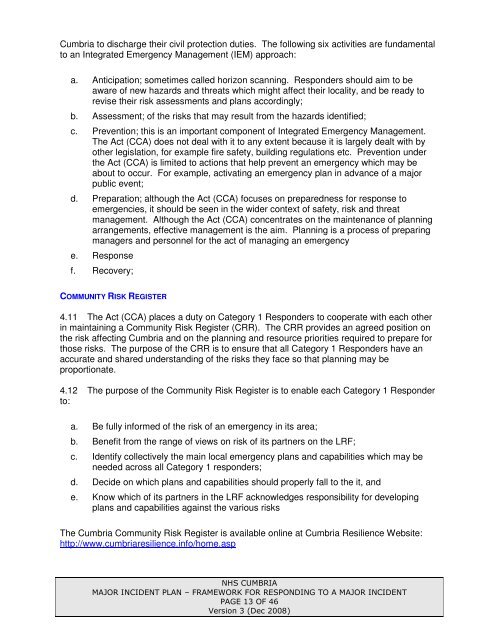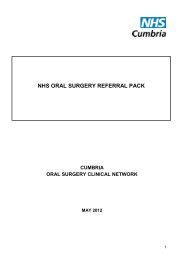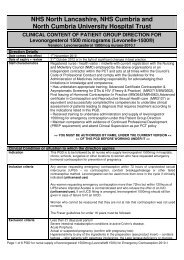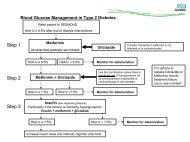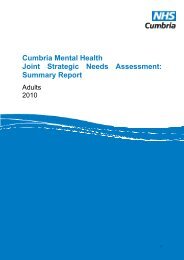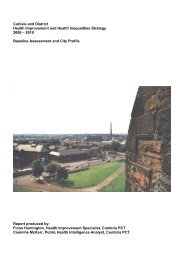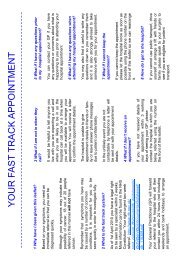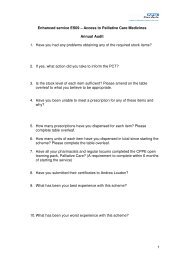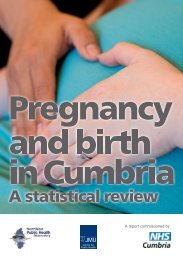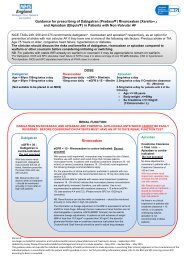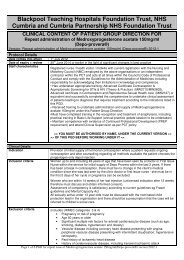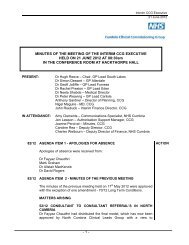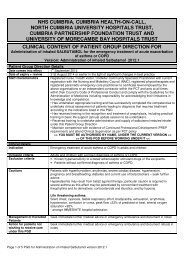MAJOR INCIDENT PLAN - NHS Cumbria
MAJOR INCIDENT PLAN - NHS Cumbria
MAJOR INCIDENT PLAN - NHS Cumbria
Create successful ePaper yourself
Turn your PDF publications into a flip-book with our unique Google optimized e-Paper software.
<strong>Cumbria</strong> to discharge their civil protection duties. The following six activities are fundamentalto an Integrated Emergency Management (IEM) approach:a. Anticipation; sometimes called horizon scanning. Responders should aim to beaware of new hazards and threats which might affect their locality, and be ready torevise their risk assessments and plans accordingly;b. Assessment; of the risks that may result from the hazards identified;c. Prevention; this is an important component of Integrated Emergency Management.The Act (CCA) does not deal with it to any extent because it is largely dealt with byother legislation, for example fire safety, building regulations etc. Prevention underthe Act (CCA) is limited to actions that help prevent an emergency which may beabout to occur. For example, activating an emergency plan in advance of a majorpublic event;d. Preparation; although the Act (CCA) focuses on preparedness for response toemergencies, it should be seen in the wider context of safety, risk and threatmanagement. Although the Act (CCA) concentrates on the maintenance of planningarrangements, effective management is the aim. Planning is a process of preparingmanagers and personnel for the act of managing an emergencye. Responsef. Recovery;COMMUNITY RISK REGISTER4.11 The Act (CCA) places a duty on Category 1 Responders to cooperate with each otherin maintaining a Community Risk Register (CRR). The CRR provides an agreed position onthe risk affecting <strong>Cumbria</strong> and on the planning and resource priorities required to prepare forthose risks. The purpose of the CRR is to ensure that all Category 1 Responders have anaccurate and shared understanding of the risks they face so that planning may beproportionate.4.12 The purpose of the Community Risk Register is to enable each Category 1 Responderto:a. Be fully informed of the risk of an emergency in its area;b. Benefit from the range of views on risk of its partners on the LRF;c. Identify collectively the main local emergency plans and capabilities which may beneeded across all Category 1 responders;d. Decide on which plans and capabilities should properly fall to the it, ande. Know which of its partners in the LRF acknowledges responsibility for developingplans and capabilities against the various risksThe <strong>Cumbria</strong> Community Risk Register is available online at <strong>Cumbria</strong> Resilience Website:http://www.cumbriaresilience.info/home.asp<strong>NHS</strong> CUMBRIA<strong>MAJOR</strong> <strong>INCIDENT</strong> <strong>PLAN</strong> – FRAMEWORK FOR RESPONDING TO A <strong>MAJOR</strong> <strong>INCIDENT</strong>PAGE 13 OF 46Version 3 (Dec 2008)


